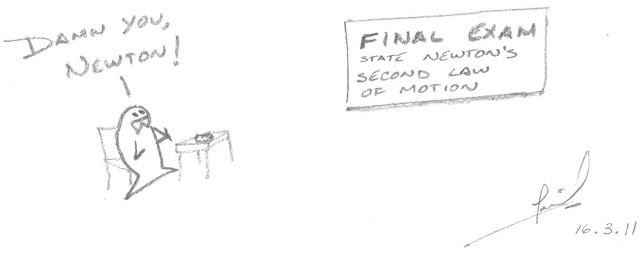Many would think that the boring lessons of a first course in Physics would never have anything to do with real life. Perhaps you too, were one of the students sitting in the last row of the classroom, annoyingly saying things like "I'm never going to use this in real life, so why should I learn it now??" and right afterwards continue the hard labor of throwing a paper plane to tease the nerd sitting at the front row.
Well, if that was your appreciation back then, read on...
I'm not going to state the Laws of Newton just as Sir Isaac did in his Principia, however if you must know, then read the Further Reading section. In the mean time, the First Law of Motion states in plain, understandable English:
If a thing is not moving and no one touches it, it won't move. In the same way, if a thing is moving and no one messes with it, it will continue to move.
So stop jerking about your lost keys... If no one touched them, they're in the very same placed you left them.
 |
| Where are the keys? Where are the keys? Where are the $@%& keys? |
But let's go a step further and try to see the magic of this in a contemporary environment: at the office!
So, if Newton was right and I interpreted him correctly, any procrastinating employee will continue to procrastinate unless an external factor is applied to him, say for instance:
1. The boss
2. Lunch time
3. His peers
4. Incoming critical work load
The state which now the employee adopts is no longer procrastination (not moving), since it has been affected by an external agent, now he is pretending to work, having lunch, talking about yesterday's Football match or actually working (moving).
In the same way, this employee will stay in that state (of moving) until again another external factor interrupts it. Say:
1. The boss walks away
2. Lunch time is over
3. Everyone agrees Manchester United kicks ass
To sum up, you're all under Newton's scope and there's but a few things to do about it, enjoying it, being the best among the alternatives.
_________
Further reading:
http://en.wikipedia.org/wiki/Principia_Mathematica
Newton's Laws of Motion for the Real World:
Second
Third
Newton's Laws of Motion for the Real World:
Second
Third






